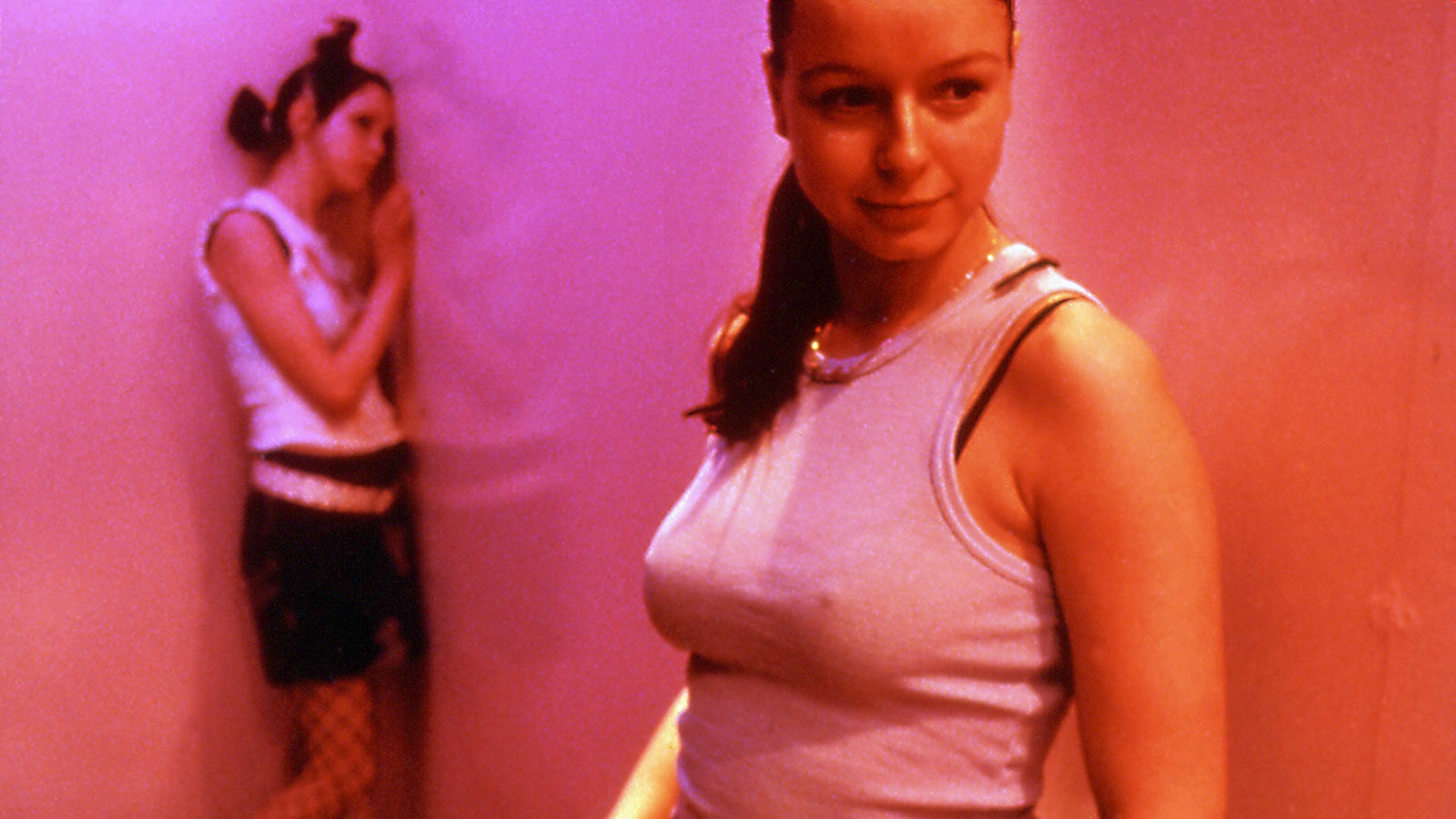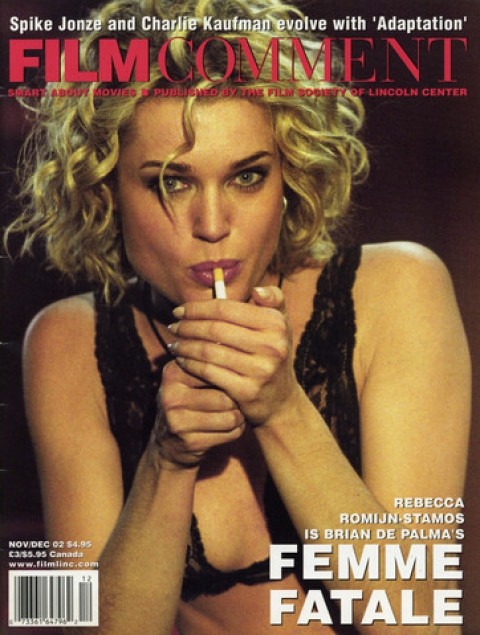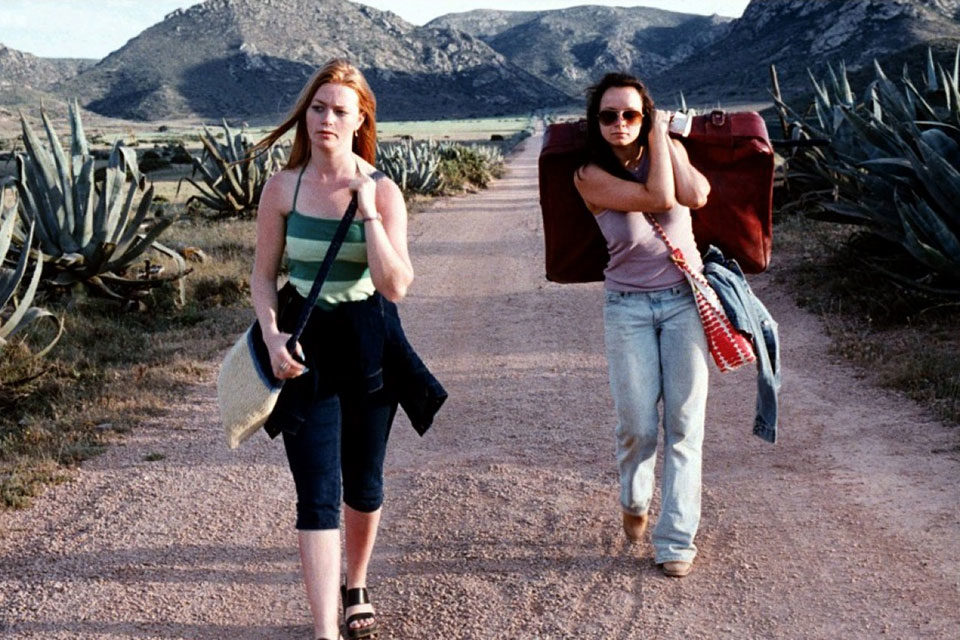
Review: Morvern Callar
Not far into Lynne Ramsay’s adaptation of Alan Warner’s 1995 cult novel Morvern Callar, the heroine walks down a street at night in black tights and platform shoes, casting a long, fingerlike shadow on the pavement as a cat meows in the darkness. Later in the film an old woman points toward cascading snow outside her window, but lets her hand fall in silence. These are only two of many heart-stopping moments that fall outside the minimal plot, enveloping it in unnervingly random poetry. As richly detailed as Ramsay’s 1999 feature, Ratcatcher, but with far less action and dialogue, Morvern Callar asks the viewer to make a leap of faith into its absurd, frustrating beauty.

It’s Christmastime in a Scottish port town, and Morvern (Samantha Morton), a 21-year-old supermarket clerk, has discovered that her boyfriend has committed suicide during the night, leaving behind a corpse, several gifts, and a note on the computer. She’s introduced emerging from an apparent stupor, caressing his body to the low hum of slowly flashing Christmas tree lights. She opens the presents—leather jacket, gold cigarette lighter, Walkman, and mix tape labeled “MUSIC FOR YOU”—dresses, makes herself up, lifts some cash from the dead man’s pocket, and goes out to meet her friend Lanna (Kathleen McDermott). The pair embark on a bout of surreal partying; when Morvern eventually returns home she rereads the note, which directs her to try and publish the boyfriend’s novel, and to organize the funeral. She replaces his name with her own on the manuscript and mails it off, then dismembers the body and buries it. The funeral money pays her and Lanna’s way to a resort in southern Spain that’s like a vision of spring break in hell, packed with dead-eyed kids. Their subsequent retreat into the preternaturally stunning countryside—heralded by a brief shift to grainy, hypersaturated color—triggers an argument, and they separate.
As in the book, music is an essential part of the narrative, serving as an oblique reflection of Morvern’s state of mind. At crucial moments she listens, often rhapsodically, to songs on the Walkman; club music sometimes serves a similar function. When she matter-of-factly cuts up the boyfriend’s body in the tub, wearing panties, aviator shades, and a faint smile—not least important, looking gorgeous in the harsh, improbably glamorous bathroom lighting—she blasts The Velvet Underground’s “I’m Sticking with You.” She seems almost to display an ironic appreciation for the extremity of her actions (though the script thankfully eliminates the novel’s arch reference to Morvern’s enthusiasm for Abel Ferrara’s Ms. 45). With Morvern Callar Ramsay has made a darkly contemporary musical, in which her heroine’s brand of instinctive cool seems to come as easily as feelings of warmth and connection on E.

As intriguing as the psychological importance of the relentlessly hip soundtrack (other songs include Ween’s “Japanese Cowboy” and Lee Hazlewood and Nancy Sinatra’s “Some Velvet Morning”) is the way that Morvern Callar echoes much contemporary photography in its off-kilter but always extraordinary framing, palette, subject matter, and mood. It resonates beyond most of the recent crop of surreal scenes involving young women by photographers such as Justine Kurland, Anna Gaskell, and Jenny Gage; and, while Ramsay’s sensibility is entirely her own, it approaches the rawness of work by Nan Goldin or Richard Billingham. One might pull out countless individual shots and have artworks that feel complete, which is no small accomplishment for a narrative filmmaker. Ramsay, who has degrees in photography and cinematography, worked with the same talented DP, Alwin Kiichler, on the vivid shorts Small Deaths (96) and Gasman (97), as well as Ratcatcher, and the pair’s collaboration has grown more impressive with each new project.
As in her earlier films, Ramsay mixes actors with nonactors, notably using a convincing nonprofessional in the role of Lanna. but she relies heavily on Morton’s uncanny performance as the half dead, half hopelessly alive Morvern—a fiercely resourceful and ultimately sympathetic creature. The film’s conclusion may be a bit too open-ended and upbeat (a crucial event in the novel has been left out), leading viewers to infer that she has “found herself.” rather than something more ambiguous. It might have ended after Morvern meets with two unctuous publishers, who praise the novel’s “female voice.” At that moment Morton’s tough-pretty face suggests nothing so much as a canary that has eaten a cat.







